Music Educators Association of New Jersey
Serving teachers and students since 1927



MEA Presents . . . October 19, 2023 Elefante Music and via Zoom
MEA President Danette Whelan began the meeting with a polling of attendees re the motion to accept the proposed revisions of the MEA bylaws. The motion passed. Sophia Agranovich, co-chair of the Programs Committee, then introduced Eduardus Halim, the distinguished presenter.
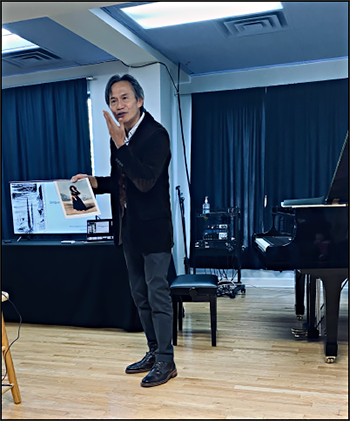 Eduardus Halim was the last student of Vladimir Horowitz and has been described as a “born Chopinist.” He opened his talk/performance by placing Enrique Granados [1867-1916] at the pinnacle of Spanish composers alongside Albéniz and de Falla. He spoke eloquently about his style: decorated or ornamented writing, layered pianism, polyphony, changes in tempo, and a call for musical color. Inspired by the etchings of Goya, (some copies of which Mr. Halim displayed), Granados demanded the height of pianism in his Goyescas. The music is highly complex. So programmatic were these six musical sketches, that a friend suggested Granados make them the basis for an opera. Granados complied, but the opera fell flat. Eduardus commented on how pianists often dislike orchestral realizations of piano music. He recommended two less demanding Granados piano collections: Valses poéticos, (Ravelesque waltzes), and Escenas románticas.
Eduardus Halim was the last student of Vladimir Horowitz and has been described as a “born Chopinist.” He opened his talk/performance by placing Enrique Granados [1867-1916] at the pinnacle of Spanish composers alongside Albéniz and de Falla. He spoke eloquently about his style: decorated or ornamented writing, layered pianism, polyphony, changes in tempo, and a call for musical color. Inspired by the etchings of Goya, (some copies of which Mr. Halim displayed), Granados demanded the height of pianism in his Goyescas. The music is highly complex. So programmatic were these six musical sketches, that a friend suggested Granados make them the basis for an opera. Granados complied, but the opera fell flat. Eduardus commented on how pianists often dislike orchestral realizations of piano music. He recommended two less demanding Granados piano collections: Valses poéticos, (Ravelesque waltzes), and Escenas románticas.
How did Goya influence Granados? Late in life, Goya produced a set of 80 prints. A subset known as Los Caprichos, (prints portraying a dark side of life, some romantic, some suggesting social commentary), may have influenced Granados. Other features might have been the skin color of Goya’s subjects, the intricate fabrics, the delicate lace trims and soft velvets that suggest lush harmonies and elaborate ornamentation.
Goyescas, Op.11, subtitled Los majos enamorados (The Gallants in Love) was written in two years. It is a set of six, to which another piece, El pelee, is sometimes added, but our presenter confined discussion to the original set. It is programmatic music that sounds improvised and spontaneous. “You are telling a story,” Mr. Halim said.
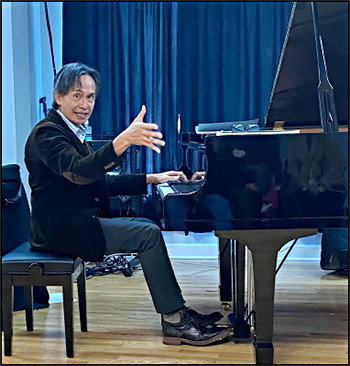
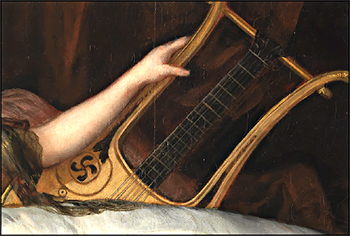 Mr. Halim informed us that he had recently performed the entire set of six pieces. That explained his sparkling performances of many excerpts. Then we were treated to a stunning performance of Los requibros, filled with color and fire. When the applause finally quieted, discussion ensued.
Mr. Halim informed us that he had recently performed the entire set of six pieces. That explained his sparkling performances of many excerpts. Then we were treated to a stunning performance of Los requibros, filled with color and fire. When the applause finally quieted, discussion ensued.
Mention was made of a lack of pedal markings, despite the many tempo, expression, and dynamic directions. Regarding expressivity, Ruth Kotik commented that Mr. Halim was a marvelous colorist, and he, in turn, told of Horowitz’s five minute litmus test for pianism: “If in five minutes, no color, I leave!” Mr. Halim added that playing “freely” requires a lot of discipline, and it can be draining. Playing “freely” requires thinking of the tiny adjustments in timing and inflection that singers may make naturally. Thanks to Eduardo Halim’s commentary and his wonderful performances, this was a most interesting and exciting event.
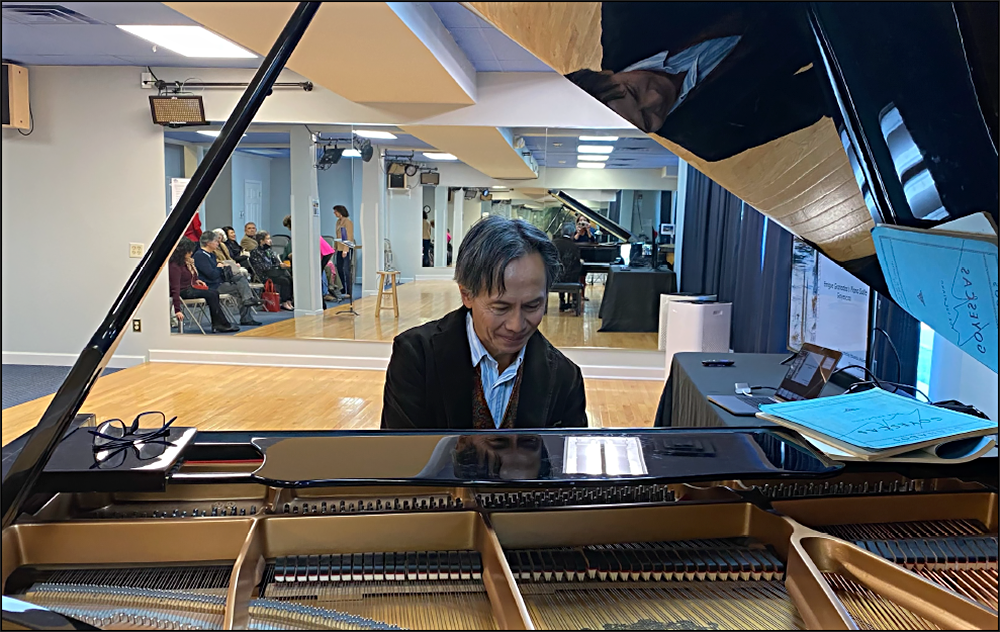
Bertha Mandel, writer
Charlene Step, photos and layout
Zoom assisted by Lisa Gonzalez
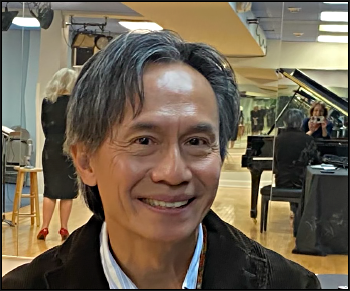 Eduardus Halim studied with Sascha Gorodnitzki and Rudolf Firkušny at the Juilliard School, and was the final student of Vladimir Horowitz. His international career includes performances with many of the world’s outstanding orchestras and recitals in prestigious concert halls. He has been described as a “born Chopinist.” Mr. Halim is currently music professor, holder of the Sascha Gorodnitzki Faculty Chair in Piano Studies, Department of Music and Performing Arts at New York University Steinhardt. For more information, visit: http://www.eduardushalim.com/bio.html
Eduardus Halim studied with Sascha Gorodnitzki and Rudolf Firkušny at the Juilliard School, and was the final student of Vladimir Horowitz. His international career includes performances with many of the world’s outstanding orchestras and recitals in prestigious concert halls. He has been described as a “born Chopinist.” Mr. Halim is currently music professor, holder of the Sascha Gorodnitzki Faculty Chair in Piano Studies, Department of Music and Performing Arts at New York University Steinhardt. For more information, visit: http://www.eduardushalim.com/bio.html